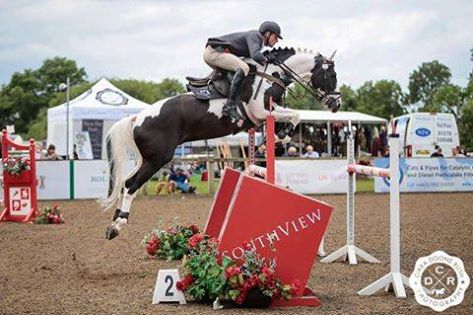Andalusian Show Horses
Spain, especially in the southeast Distribution: worldwide Height : 155 - 162 cm colors : Very common mold , besides dun , brown , black horses , occasionally foxes main applications: riding horse breeding up to high school,We all generally referred to as the Andalusians in Spain bred Iberian horse breeds , with the exception of ponies and draft horses and horses of the so-called "Pure Spanish Breed" ( Pura Raza Española , just PRE).
Background information on the evaluation and breeding of horses, see: exterior , interior , and horse breeding .
Historically, the name Andalusian is because in the Middle Ages, the whole of the Muslim part of the Iberian Peninsula , where the horse breeding flourished, Al-Andalus was called. The appellation is therefore basically not on today's region Andalusia limited. Contributes to the confusion, however, the fact that major centers of the Spanish horse breeding are actually in the southern Spanish region of Andalusia.
The breeding of the PRE is handled extremely severe in Spain, the breed registry is managed by the Department of Defense. Only stallions and mares that are registered here and licensing have completed and passed, are approved for breeding. All other Spanish horses, the absence of registration and related documents can not be considered as pure Spanish breed horses RRE or are referred to as "Andalusian".
With a medium-sized, compact and muscular body with harmonious topline the movements of the Andalusian are marked by elegance and great leaping ability. The fine, dry head has a straight or subkonvexes profile, the neck is strong and highly placed, the back is rather short, sloping shoulder. The foundation is dry, sometimes slightly, with a well muscled hindquarters.
The Andalusian horse is a noble Iberian character and shows a special aptitude for the " High School ". Andalusians are very docile and sensitive animals. They are also often known as a one-man horse, as they are very personal and can react wary of strangers. They are regarded as brave, loyal and level headed, as in reputable breeders much emphasis on the character of a horse.
The Andalusian is the Berber closely related. The close relationship between the Berbers and Iberian breeds is history through the early spread of North African horses on the Iberian Peninsula due. There were represented Berber long before AD 700 against the first Arabian horses appeared so before their appearance a strong mixing of the races took place. Genetic studies could now be demonstrated that the Berber has exerted a very strong influence on the Iberian horses. After the conquest of the Iberian Peninsula by the Moors (from 711 AD), this ancient race was during the Middle Ages fed "oriental" genetic material. Like many other breeds have been Spanish horses and later on with Arab and English thoroughbred refined.
In Jerez de la Frontera in Andalusia began in the 15th Own century, the royal family and powerful nobles funded breeding of Carthusian monks . This is considered the beginning of the breeding history of the famous Spanish Kartäuserpferde (Cartujanos) that belong to the PRE horses and are considered noble sub-race of the Andalusian.
Horse breeding in Spain is highly fragmented and is almost exclusively operated by small private breeders, each with their own branding use. There are about 3500 such brand. An Iberian breeds in Spain next to the (traditionally white) nor the Andalusians (always black), pedigreed Minorcans (Pura Raza Menorquina, short PRM) bred for there own stud books since 1989. These horses have been defined as sub-race of the PRE. By Spanish breeders called Tres Sangres ("Dreiblüter") horses do, however do not represent their own (sub) race, but this statement expresses only that here three different breeds have been crossed (typically Andalusian, Arabian and Thoroughbred). As "Hispanic-Arabs" Spanish horses are designated Arabian influence.



